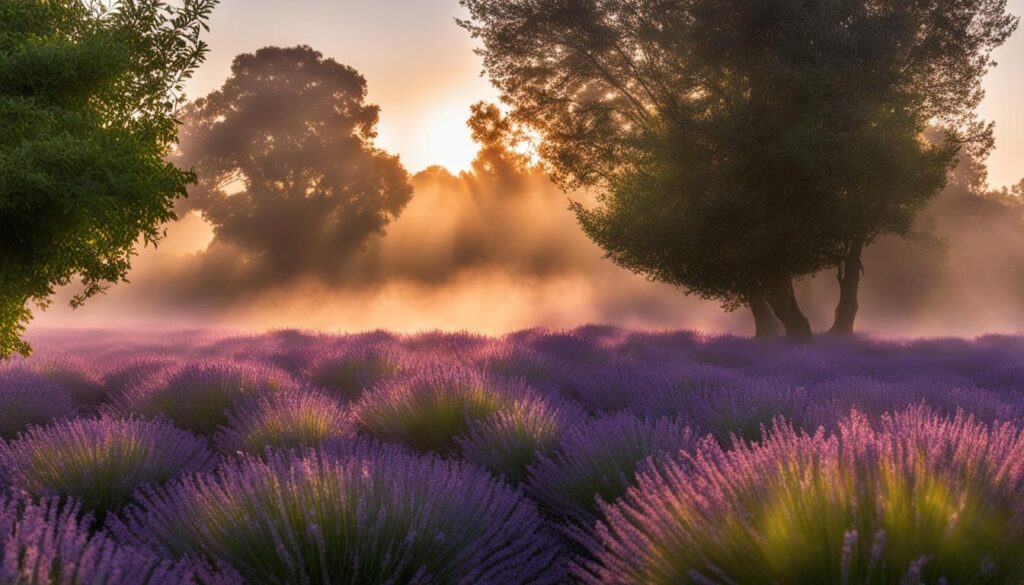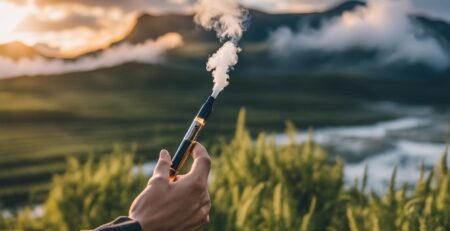Indica Strains: Do They Lead to Tiredness?
The quest for sleep and relaxation often leads individuals to explore various cannabis indica strains, renowned for their sedative effects. The longstanding perception that indica strains inherently cause drowsiness contrasts with the energizing influence attributed to sativa varieties. But is it accurate to universally declare that indica strains for sleep are the ultimate remedy for restless nights, or that does indica make you tired regardless of the context? As we delve into the properties of cannabis indica sedative effects, it is crucial to recognize the complexity behind these generalizations. Essential compounds such as myrcene and THC significantly determine a strain's impact, and individual experiences with cannabis remain deeply subjective.
From Afghan mountains to the comfort of your home, each indica strain holds a unique chemical blueprint that can sway your state of alertness or repose. It's this intricate intertwining of nature and nurture that paves the way for both predictable and surprising encounters with cannabis varieties. To grasp the true extent of indica‘s soporific reputation, join us in unraveling the layers of factors that govern the fine line between tranquil relaxation and the much-dreaded couch-lock.
Key Takeaways
- Indica strains are traditionally sought after for their potential to induce sleep, but effects can vary greatly.
- Myrcene level and THC content are critical in determining whether an indica strain will be sedating.
- The simplistic dichotomy of indica for sleep and sativa for energy does not hold up under closer scrutiny.
- Individual genetics and the endocannabinoid system play a crucial role in how one experiences cannabis's effects.
- Understanding the nuanced interplay of cannabinoids and terpenes is key to personalizing cannabis use for desired outcomes.
Understanding Indica Strains and Their Origins
The storied past of cannabis indica is deeply rooted in the rugged landscapes of Central Asia, influencing both its physical characteristics and the effects it renders upon consumption. To fully appreciate these often sought-after sedative effects, a glance into the history and botany of indica strains sheds light on their inherent qualities propelling the indica vs sativa effects on sleep debate.
The Geographic Roots of Indica
Central to the narrative of indica strains is their emergence from the Afghan region and the Kush mountains, a territory characterized by its harsh climate and unforgiving terrain. It is within these natural confines that the hallmark cannabis indica sedative effects were honed, a byproduct of both adaptation and isolation. This specific environment cultivated a rich presence of the terpene myrcene, which is primarily responsible for the calming properties that have been associated with indica cultivars throughout the ages.
Physical Characteristics of Indica Plants
As tangible evidence of their adaptation, indica plants display a robust, ‘stubby', and compact architecture. These plants grow significantly shorter and wider than their sativa counterparts, a physical trait that suits their mountainous origins. Such growth patterns contribute additional layers to the understanding of indica vs sativa effects on sleep, as the structure of these plants is reflective of their biochemistry, pronouncing certain attributes like their sleep-inducing potential. The arrival of indica strains in the United States during the 1970s brought about a new chapter in their cultivation, yet their traditional characteristics endure, marking their identity within the rich tapestry of cannabis varietals.
Does Indica Make You Tired: Exploring the Evidence
The question of “does indica make you tired?” is a recurring topic of interest among cannabis users seeking both medicinal and recreational relief. To appreciate the complexity of this question, it is crucial to investigate the role of specific compounds found within indica strains.
Myrcene and tetrahydrocannabinol (THC) are two such components that have been linked to the indica effects on energy and tiredness. While these elements are indicative of a strain's potential to sedate, the overall impact on an individual's energy levels remains a matter of personal anatomy and the unique chemical profile of the plant.
It is also important to highlight that the sedative quality often associated with indica strains is not a universal experience. Scientific evaluation confirms that a strain's effect on energy is determined by more than just its Indica label. Factors such as the presence of other cannabinoids and terpenes play a significant role in shaping the plant's influence on a user.
- High myrcene levels are known for their potential to induce sleepiness.
- THC content, especially in moderate to high doses, is associated with more pronounced sedative effects.
- Individual responses can vary greatly, with factors like personal tolerance and the endocannabinoid system influencing the onset of tiredness.
For those contemplating whether to incorporate indica into their routine, exploring the specific composition of strains can provide more personalized and predictable outcomes. Understanding the nuances of cannabinoid and terpene profiles is pivotal in managing expectations regarding the indica effects on energy.
In conclusion, while certain indica strains have earned a reputation for promoting sleep and relaxation, the answer to “does indica make you tired?” cannot be painted with a broad brush. Consideration of one's biochemistry in conjunction with the cannabis strain's unique properties offers a more refined approach to selecting suitable options for individual needs and desires.
The Role of THC in Indica’s Sedative Effects
When discussing the potent capacity of indica strains for sleep, THC holds considerable sway. This cannabinoid is known for its ability to influence our sense of wakefulness or slumber. As we explore the intricate world of cannabis and its impact on rest, it's apparent that the mysteries of THC's influence are pivotal in understanding THC's sedative effects associated with indica varieties.
Influence of THC Concentration on Sleepiness
In the quest to unravel the layers of how indica strains for sleep function, THC emerges as a central character. Its presence in moderate to high concentrations is a harbinger of the sedative domain, providing the kind of tranquility that many seek from the dusk till dawn hours. The sedation expressed can be profound or subtle, depending on the abundance of this compound in a particular strain.
How THC Affects the Endocannabinoid System
At the systemic level, THC integrates with the body's endocannabinoid system (ECS) with remarkable finesse. This interaction is integral to the orchestration of effects felt when partaking in indica-based herbal remedies. Each individual's ECS is as unique as a fingerprint, and this uniqueness spells out the level at which THC's sedative effects will play out, leading to either soporific calmness or leaving one unmoved on the energy spectrum.
Myrcene: The Terpene with Sedative Properties
Often at the heart of the debate surrounding the question “does indica make you tired?” lies a particular cannabis terpene known as myrcene. Commonly found within the rich profile of indica strains, myrcene's sedative properties have been well-documented, suggesting considerable influence over the relaxing impact these strains may elicit. The connection between myrcene domination and the likelihood of a strain causing drowsiness exemplifies the complex interaction between cannabis compounds and the human body's response.
The Sedative Impact of Myrcene on Sleep
Myrcene distinguishes itself among terpenes for its well-researched ability to assist in transitioning into a restful state of sleep. Individuals looking to unwind might gravitate towards particular indica strains, not fully realizing that it is the synergy between myrcene and other compounds, like THC, that harmonize to foster a sense of calm and potentially induce sleepiness. The calming essence of myrcene is also said to bolster the blood-brain barrier's permeability to THC, amplifying THC's effects and cementing myrcene's role as a cornerstone in the quest for tranquility.
Myrcene’s Prevalence in Indica Varieties
Indica strains are widely recognized for their robust myrcene content, especially variants that originate from regions such as the Hindu Kush mountains and Afghanistan. The heritage and terroir of these regions cultivate a naturally higher concentration of myrcene, enhancing the classic sedative archetype often associated with indica strains. Here, myrcene plays a role that extends beyond mere relaxation, potentially impacting medical marijuana patients and recreational consumers seeking shelter from the storm of daily life's turmoil.
The exploration of myrcene's relationship with sleep and the quintessential effects of indica varieties unveils the terpene's significant impact on the cannabis experience—a testament to its power to tranquillize and sedate. As we look deeper into myrcene's scientific profile, the narrative gains a newfound complexity, prompting discerning users to consider the terpene profiles of their chosen strains with attention to detail.
- Myrcene's ability to induce sleep may be influenced by its interaction with other compounds.
- Strains rich in myrcene are preferred by those seeking relaxation and a peaceful night's sleep.
- The geographical origins of a cannabis strain are definitive in its myrcene concentration.
- Adjusting to individual responses to myrcene's influence remains critical for a tailored cannabis experience.
As consumers increasingly appreciate the artful nuances of cannabis, the understanding of compounds like myrcene proves invaluable. Whether the goal is to mitigate restlessness or simply to enjoy the serenity that a well-chosen indica strain can offer, acknowledging myrcene's sedative properties represents a vital step towards achieving those coveted states of mind and body.
Indica vs Sativa Effects on Sleep: What Research Shows
When it comes to the long-standing debate of indica vs sativa effects on sleep, modern research presents a nuanced perspective. The sleep-inducing properties of cannabis strains cannot be generalised merely by their indica or sativa heritage. Instead, the interaction of specific compounds, particularly cannabinoids and terpenes, plays a pivotal role in the effects each variety may have on sleep.
For those seeking out the best indica strains for relaxation, it's important to consider the prominence of myrcene—the ubiquitous terpene known for its calming attributes. The effect is further modulated by THC levels, which in higher quantities can enhance sedative properties. However, a sativa strain with significant levels of myrcene may also exhibit similar sedative effects.
Here's a comparative analysis of common terpenes found in indica and sativa strains and their associated effects:
| Terpene | Common in Indica | Common in Sativa | Sedative Effect | Energizing Effect |
|---|---|---|---|---|
| Myrcene | Yes | No | High | Low |
| Limonene | No | Yes | Low | High |
| Linalool | Yes | No | Moderate | Low |
| Terpinolene | No | Yes | Low | Moderate |
| Pinene | Sometimes | Yes | Low | Moderate |
The personal chemistry of an individual also significantly determines how their body interacts with the unique profile of each strain. The diversity of the endocannabinoid system among people means that no two experiences with cannabis are exactly alike, making self-experimentation and expert guidance crucial steps in identifying which strains aid sleep the most effectively.
Conclusively, while anecdotal evidence supports the popular belief in indica strains being more conducive to sleep, science advocates a more tailored approach. Consideration of terpene and cannabinoid composition along with personal biological factors will offer a more informed choice for those seeking the serene embrace of a restful night's slumber.
CBD’s Influence on Sleep: Indica Strains’ Quiet Secret
While the spotlight often shines on THC when discussing cannabis indica and its ability to send users into a peaceful slumber, CBD's role in sleep can't be underestimated. Particularly prevalent in indica strains for insomnia, CBD emerges as a silent guardian, potentially leading the weary towards the rest they seek. It's this cannabinoid's sedative effects at higher doses that pique the interest of those tormented by restless nights.

High CBD Indica Strains for Insomnia Relief
A selection of indica strains rich in CBD has garnered the attention of researchers and consumers alike for their purported benefits in combatting sleeplessness. These strains, sporting higher CBD levels, are commonly associated with insomnia relief, offering an alluring alternative to conventional sleep aids. Thus, they stand as a beacon of hope for those facing the challenges of insomnia.
Understanding CBD Dosage and Its Sedative Effects
When it comes to reaping CBD's sleep-inducing benefits, dosage plays a decisive role. Low CBD dosages may invoke a subtle uplift, potentially countering the desired sleepiness. However, in higher concentrations, CBD's sedative effects can come into full play, tipping the scales in favor of deep, uninterrupted sleep. This delicate balance between dose and effect underscores the importance of individualized approaches to using CBD for sleep.
Best Indica Strains for Relaxation and Deep Sleep
Discovering the best indica strains for relaxation can be the gateway to tranquility and a night of deep sleep. Select breeds of this calming cannabis subtype are particularly adept at easing the user into a state of serenity without necessarily tipping them into lethargy. Trusted for their reliability, these strains harness the interplay of cannabinoids and terpenes that aim to soothe the mind and rest the body.
Let's take a closer look at some indica variants known among connoisseurs for their effectiveness:
- Granddaddy Purple: Its rich berry aroma complements a concoction of myrcene, linalool, and other terpenes that make it a favorite for nighttime use.
- Northern Lights: Often hailed as a staple for those seeking restorative sleep, Northern Lights exudes a pine scent that pairs well with its sedative effects.
- Blueberry: The relaxing qualities of Blueberry are as timeless as its sweet, fruit-laden flavor profile, perfect for unwinding after a long day.
- Afghani: With origins tracing back to the very heart of relaxation-rich indicas, Afghani is known for its earthy notes and profound tranquility.
Choosing an indica strain that aids relaxation and deep sleep involves more than just THC; it's the symphony of components working in harmony. When selecting a strain, full-spectrum options that balance THC with calming CBD and terpenes such as myrcene and linalool should be sought after for a more well-rounded experience. This balance ensures that relaxation does not fully immobilize the user, maintaining a blissful state that is conducive to deep sleep.
Be it for medical or recreational purposes, opting for the right strain can profoundly affect sleep quality and overall downtime. Among the plethora of choices, some have risen above the rest by consistently delivering an escape into relaxation and a passage to rejuvenation through sleep. Here are the stars of the show:
| Strain | THC Content | CBD Content | Dominant Terpenes |
|---|---|---|---|
| Granddaddy Purple | High | Low-Medium | Myrcene, Caryophyllene, Pinene |
| Northern Lights | High | Low | Terpinolene, Myrcene, Caryophyllene |
| Blueberry | Medium | Low | Myrcene, Pinene, Caryophyllene |
| Afghani | Medium | Medium | Myrcene, Limonene, Caryophyllene |
When searching for the best indica strains for relaxation and deep sleep, the diversity of cannabis profiles calls for consideration of personal preferences and reactions to specific cannabinoid and terpene combinations. Aligning the right strain with individual needs can pave the way to unlocking the therapeutic potential that indica encompasses, creating a comfort zone that nurtures peace and invites sleep.
Indica’s Diversity: Not All Strains Are Created Equal
The common perception of indica strains as merely sedative fails to capture their diverse potential. With an array of terpenes significantly influencing their effects, there is an entire spectrum to consider. By focusing on these terpenes, we uncover a much more nuanced picture that challenges the typical stereotypes, highlighting indicas that deviate from their traditional sedative role. These varied profiles cater to specific needs, such as combatting fatigue and boosting energy.
How Terpenes Contribute to Indica’s Varied Effects
Terpenes, the fragrant oils in cannabis, are the unsung heroes that shape user experience. Different concentrations and combinations lead to a broad range of effects for indica strains, way beyond the realm of sleep aid or relaxation. The synergy among terpenes can result in contrasting outcomes; while myrcene is known for its soothing effects, others like terpinolene may spark a sense of wakefulness and vitality in users.
Indica Strains with Unexpected Uplifting Effects
While it's true that many indica strains exhibit calming properties, there's an intriguing subset that has the opposite effect. Strains with lower myrcene and higher concentrations of terpenes like limonene, pinene, and terpinolene could be the secret weapons for those seeking indica strains for fatigue relief and more energizing indica strains. Instead of gearing the body down for rest, these particular terpene profiles may energize and uplift.
In an effort to illustrate the versatility of indica strains, here's a selection known for their more energizing properties:
| Strain | Dominant Terpenes | Typical Effects |
|---|---|---|
| Somango | Beta-caryophyllene, Pinene, Limonene | Uplifting, Euphoric |
| Alien Dawg | Limonene, Linalool, Myrcene | Energizing, Creative |
| Speed Queen | Myrcene, Limonene, Eucalyptol | Invigorating, Focused |
| Candy Cane | Beta-caryophyllene, Myrcene | Balanced, Uplifting |
| Purple Chemdawg | Limonene, Beta-caryophyllene | Energizing, Uplifting |
Choosing an indica strain should not be relegated to a simple dichotomy of sleep versus wakefulness. Many indica strains are perfectly positioned to challenge the myth that they are inherently soporific. The secret to their invigorating power lies in a rich tapestry of terpenes that stimulate rather than soothe. With informed choices, users can unlock the full capacity of the indica family, harvesting both energy and relaxation as needed.
Decoding the Cannabis Indica Sedative Effects
The tranquilizing reputation of cannabis indica is often linked to its purported ability to induce relaxation and sleep. But to truly harness these cannabis indica sedative effects, one must delve into the pharmacological choreography of its cannabinoid and terpene profiles. It is within this complex synergy that the secrets to customized therapeutic experiences lie.
Combining Terpenes for Desired Outcomes
The art of blending terpenes within cannabis indica strains is akin to a master perfumer creating a signature fragrance. Each terpene carries distinct notes that can calm the mind, relax the body, or do both. To achieve a specific effect, such as profound relaxation or merely gentle calmness, careful attention must be paid to the terpene symphony within the plant.
- Myrcene, often dominant in indica strains, is celebrated for its calming properties and is a key player in the sedative ensemble.
- Adding to this, terpenes like linalool and beta-caryophyllene promote a soothing atmosphere, each contributing to a deeper state of peace.
- In contrast, limonene and pinene provide uplifting accents to the sedative chorus, offering a nuanced relaxation that avoids full sedation.

Impact of Cannabinoid Ratios on Indica’s Effects
The influence of cannabinoids like THC and CBD extends beyond their individual attributes, defining how they complement each other to sculpt the indica strains for relaxation. THC, in higher concentrations, typically ushers in a potent sedative effect, whereas CBD in moderation may provide a more balanced calm.
| Cannabinoid | Typical Effect at Low Dose | Typical Effect at High Dose |
|---|---|---|
| THC | Stimulating | Sedative |
| CBD | Calming | Sedative |
| CBN | Mildly Relaxing | Strongly Sedative |
Understanding the intricate relationship between these pivotal compounds offers insights into the sedative journey one might expect from an indica strain. By modulating the cannabinoid ratios, it is possible to refine the sedative effects to suit individual preferences and needs for tranquility and restfulness.
Individual Endocannabinoid Systems and Strain Reactivity
The intriguing world of personalizing cannabis experience hinges on the understanding of endocannabinoid system variations from person to person. These biological differences are central to modulating the unique effects that cannabis strains have on an individual's alertness, mood, or restfulness. With a greater awareness of the nuances in one's own endocannabinoid system comes the empowerment to tailor a cannabis regimen to align with specific wellness goals.
Your Genetics and Cannabis Experience
Genetic makeup plays a substantial role in determining the nuances of a consumer's interaction with cannabis. This includes variations in the metabolism of cannabinoids such as THC and differences in the density of cannabinoid receptors. These factors culminate in a highly individualized response to cannabis, one that underscores the importance of understanding personal genetics in the context of cannabis use.
Personalizing Cannabis Use for Desired Effects
The quest for a tailored cannabis experience often leads to a deeper exploration of one's endocannabinoid system. By recognizing and adapting to the inherent endocannabinoid system variations, individuals can more effectively select cannabis strains that are more likely to yield the desired effects, whether for relaxation or alertness. Refining this personalization process can enhance overall satisfaction and effectiveness of cannabis use.
Indica Strains for Fatigue Relief: Myth or Reality?
The common association of indica strains with relaxation and sleep often overshadows their potential in combatting fatigue. However, the biological intricacies of cannabis effects on energy suggest a more complex relationship than previously considered. Certain indica hybrids, armed with a unique terpene profile, show promise as indica strains for fatigue relief, challenging the prevailing notion that all indica varieties lead solely to sedation.
Strains rich in energizing terpenes such as terpinolene and limonene could offer a surprising solution to those seeking a pick-me-up after a long day. This unexpected energizing effect provides a glimmer of hope for proponents of indica strains, advocating their role as an effective option for those grappling with weariness.
| Strain | Dominant Energizing Terpenes | Known Effects |
|---|---|---|
| Alien Dawg | Limonene, Beta-Caryophyllene | Creativity, Euphoria |
| Somango | Pinene, Myrcene, Limonene | Uplifting, Euphoric |
| Speed Queen | Terpinolene, Myrcene | Energy, Focus |
| Purple Chemdawg | Limonene, Linalool | Invigoration, Uplift |
The key lies in the terpenes. These aromatic compounds are fundamental in molding the effect profile of a strain, leading to diversified experiences. An indica variety with a terpene bouquet that leans more towards refreshment than relaxation can modify the typical expectations of such strains, offering a revitalizing lift ideal for individuals contending with fatigue.
- Terpinolene is recognized for its capacity to stimulate and enhance mood.
- Limonene's citrusy scent is well-regarded for its stress-relieving and energy-boosting attributes.
- Even the presence of myrcene, synonymous with relaxation, in tandem with invigorating terpenes, can be part of a balanced therapeutic profile catering to those needing an energy uplift.
In discerning the true potential of indica strains for fatigue relief, it is essential to dispel the myth that indica can only sedate. The botanical diversity of cannabis presents a treasure trove of possibilities, where the right strain might just be the elixir for breaking through the somnolent haze and restoring vitality.
Indica Strains for Insomnia: A Natural Alternative?
As sleeplessness becomes a common ailment, the search for effective and natural sleep aids continues with increasing interest in the potential of indica strains for insomnia. Leveraging the sedative qualities innate to some indica strains, individuals are finding solace in the arms of nature's pharmacy.
How Indica Strains Can Be Part of a Sleep Hygiene Routine
Integrating indica strains into a well-rounded sleep hygiene regimen may provide the soothing edge needed for a restful night. Alongside practices such as maintaining a consistent sleep schedule and creating a rest-conducive environment, the choice of certain indica strains could contribute significantly to quieting the mind and preparing the body for sleep.
Anecdotal Evidence and Clinical Research
The value of indica strains for insomnia has been long-touted in cannabis circles, supported by personal testimonies that speak to their effectiveness. While empirical research in this area is still growing, preliminary studies align with user experiences, suggesting that certain terpene and cannabinoid profiles characteristic of indica may indeed promote better sleep.
The Placebo Effect and User Expectations in Cannabis Use
The complex interplay between user expectations and the actual effects of cannabis consumption is significantly influenced by the placebo effect in cannabis use. What users believe about a specific strain, often informed by interactions with knowledgeable staff or online reviews, can shape their subsequent experience. This psychological phenomenon highlights the importance of understanding how suggestion and mental states can alter perceptions of a strain's impact.
As such, the placebo effect plays a more substantial role than many might assume. When a consumer is told that a particular strain will soothe them into restfulness, their body may respond accordingly, even if the strain's profile isn't inherently sedative. Conversely, should the same user anticipate a burst of energy based on previous encounters or recommendations, the mind and body might prepare for an uplift, despite contradictory chemical compositions.
Environmental contexts and mood states are also critical factors in the overall response to cannabis usage. The surroundings in which one consumes, along with their current emotional state, have been shown to considerably alter and dictate the nuances of their experience. Below is a table that illustrates some typical user expectations derived from common predictors and how they may be linked to the placebo effect:
| Predictor | Common Expectation | Potential Placebo Outcome |
|---|---|---|
| Budtender Suggestion | Energizing Effect | User feels more alert and active |
| Online Reviews | Sedative Effect | User experiences increased relaxation |
| Previous Experience | Pain Relief | User notices diminished discomfort |
| Brand Reputation | Quality of Experience | User perceives a more enjoyable session |
The implications of the placebo effect in cannabis use reinforce the necessity to approach strain classifications with a degree of skepticism. It's vital that both recreational and medical users, as well as those advising them, are educated about the nuanced role of expectations in shaping the psychoactive journey with cannabis.
In conclusion, the recognition and understanding of the placebo effect in the realm of cannabis are crucial. It is not matched simply by identifying a strain as indica or sativa or by focusing on the percentage of THC or CBD within. Instead, it encompasses an elegant blend of the mind's anticipations and the body's reactions to external cues. As the public becomes increasingly cannabis-savvy, appreciating this complex dynamic will be integral in personalizing use for the most beneficial outcomes.
Conclusion
In our exploration of cannabis indica and its effects, we've traversed a ranging body of evidence to address the question: “does indica make you tired?” The answer is as layered as the strains themselves, encompassing a complex interplay of cannabinoids like THC and CBD, as well as terpenes such as myrcene. The capacity for certain indica strains to foster tiredness and relaxation is certainly present, albeit not an absolute certainty due to vast strain diversity and individual physiological variations.
Summarizing Indica’s Potential for Tiredness and Relaxation
The verdict rests upon personal experiences, highlighted by the reality that a person's unique endocannabinoid system significantly influences their response to cannabis. From the Afghan mountains' myrcene-rich nomads to the modern-day aficionado, personalizing the cannabis experience remains a pivotal aspect of its use. Therefore, while some indica strains have been closely linked with sedative effects, a one-size-fits-all approach falls short of accounting for the intricacies involved in each interaction with the herb.
Moving beyond Stereotypes: Personalizing Your Indica Experience
The journey towards maximizing the benefits of indica strains — whether for sleep, relaxation, or perhaps an unexpected burst of energy — begins with a deeper understanding of one's own reactivity to cannabis's plethora of compounds. Moving beyond simplistic categorizations requires a nuanced approach that considers dosage, the cannabinoid-terpene ballet, and the unique print of one's endocannabinoid landscape. This personalized methodology empowers users to harness the full spectrum of indica's potential, whatever their restorative goals may be.
FAQ
Does indica make you tired?
Indica strains are often associated with sedative effects that can lead to tiredness, especially when they have high levels of myrcene and THC. However, not all indica strains will necessarily make you tired as the effects can be subjective and depend on individual factors and the specific chemical makeup of the strain.
What are the physical characteristics of indica plants?
Indica plants are typically shorter and bushier compared to sativa plants. They tend to have wider leaves and a more ‘stubby' appearance. This stature reflects their adaptation to their original growing conditions in the mountainous and cooler climates of regions like Afghanistan.
How does THC concentration affect sleepiness?
Higher concentrations of THC in cannabis can have a sedative effect, promoting sleepiness. The way THC interacts with the body's endocannabinoid system can lead to either a stimulating or sedating experience, especially at moderate to high doses.
How prevalent is myrcene in indica varieties?
Myrcene is one of the most abundant terpenes found in indica varieties, particularly those that originate from regions like Afghanistan and the Hindu Kush. This terpene is known for its sedative properties, contributing to the relaxing and sleep-inducing qualities often attributed to indica strains.
Are there differences in the effects on sleep between indica and sativa?
Both indica and sativa strains can affect sleep, but they are typically associated with different effects. Indica strains are commonly believed to promote sleep due to their sedative properties, while sativa strains are more often associated with uplifting and energizing effects. However, some sativa strains may also help with sleep if they contain certain terpenes that are similar to those found in indica strains.
What role does CBD play in influencing sleep?
CBD, particularly at higher doses, has been found to have sedative effects that can influence sleep patterns. Many indica strains contain higher levels of CBD, which may help to relieve insomnia and encourage deeper sleep. However, the effect of CBD on sleep can be dose-dependent, with lower doses sometimes being more stimulating.
What are some of the best indica strains for relaxation and deep sleep?
The best indica strains for relaxation and deep sleep typically have a rich profile of cannabinoids and terpenes that work synergistically to enhance their sedative effects. Strains renowned for these qualities often contain THC, CBD, myrcene, linalool, and terpinolene. However, individual experiences may vary.
Can indica strains have uplifting effects?
Yes, some indica strains can have uplifting and energizing effects, which may seem counterintuitive. This is due to the diversity of terpene profiles in various strains, with terpenes like terpinolene, limonene, and pinene potentially providing an energizing boost even in some indicas.
How do individual endocannabinoid systems affect cannabis experience?
The endocannabinoid system (ECS) varies from person to person, with genetic differences influencing how cannabinoids are metabolized and the abundance of cannabinoid receptors. These individual variations play a critical role in the subjective experience of the effects of cannabis, including those of indica strains.
Can indica strains relieve fatigue?
While indica strains are predominantly associated with sedation, some may help relieve fatigue. This effect is less certain and driven by each user's biological response, with certain indica hybrids potentially offering more energizing benefits due to specific terpene profiles.
Are indica strains effective for insomnia?
Indica strains are often sought after for their potential effectiveness in managing insomnia. Anecdotal evidence supports the use of particular indica strains for sleep, and while clinical research is still growing, these strains are frequently considered in the treatment of sleep disorders due to their sedative properties.
How can the placebo effect and expectations influence cannabis use?
The placebo effect, along with user expectations shaped by various external factors, can have a significant influence on the perceived outcomes of cannabis use. How one's environment and mood interact during cannabis consumption can also greatly impact individual responses to different strains.











Leave a Reply